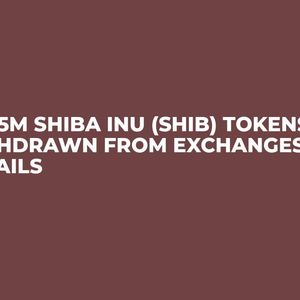Stablecoins Market Cap Surges Past $250B, Signaling New Era for Crypto Liquidity
5 min read
A prominent advancement for the digital asset ecosystem, total market cap of stablecoins has surged past $250 billion. This milestone marks a clear uptick in investor interest and confidence in crypto markets as the figure stood at a low of about $123 billion in mid-2023. More than a twofold increase has occurred in just half a year’s time. Stablecoins are often portrayed as the monetary base of the crypto economy. They are the bridge between traditional finance and decentralized networks. The increasing supply of stablecoins not only reflects user demand but also serves as the base liquidity layer for centralized exchanges, decentralized finance (DeFi) platforms, and emergent Web3 applications. The freshest statistics point to a return of capital that is widespread and well-distributed. Analysts see this return best reflected in the rapid rise and sharp uptick in the circulation of a specific type of digital asset: stablecoins. Stablecoins are now everywhere, and it is their health and the health of the businesses backing them that provides the most reassuring picture for anyone worried about what comes next for the digital asset space. USDT and USDC Maintain Dominance, But New Entrants Gain Ground Tether’s USDT stablecoin holds a commanding 62% market share and is far ahead of its nearest rival in the stablecoin sector. Tether has long occupied the position of being the most liquid and widely used stable asset not just in the crypto community but across exchanges that are centralized as well as those that are decentralized. Tether’s presence and use in emerging markets and in cross-border transactions is something that can hardly be matched by any other stablecoin. It tracks with Tether’s advancing footprint in the crypto scene. The next stablecoin after USDT is USDC, issued by Circle. USDC makes up 24% of the stablecoin supply. Though its share has dipped from earlier highs, USDC remains the preferred stablecoin in regulated environments and among U.S.-based institutional users because USDC has a strong reputation for transparency and a compliance-oriented business model. Stablecoins market cap surpasses $250B in a new milestone for crypto liquidity The total value of stablecoins in circulation has climbed past $250B, more than doubling from a ~$123B low in mid-2023. $USDT remains dominant at 62%, followed by $USDC at 24%, while a growing… pic.twitter.com/sxCNmrtNzv — CryptoRank.io (@CryptoRank_io) June 9, 2025 In addition to the two dominant players, the number of alternative stablecoins in the market is growing. Tokens like $USDe, $DAI, and $BUIDL enjoy adoption and offer utility on a level that is becoming too substantial to ignore. These stablecoins are different, each with its own approach to stability and design: —$USDe employs a decentralized autonomous organization with over 100,000 members to govern its monetary policy. —$DAI is a collateral-backed stablecoin that achieves real-world stability through over- and under-collateralizing processes and smart contracts. — $BUIDL, a product of the blockchain accelerator program at the University of Hong Kong, is a “shopping basket” stablecoin that utilizes 12 different cryptocurrencies to form its asset backing. While these newcomers don’t yet have the heft of USDT or USDC, the stablecoin ecosystem is varied enough that it can sustain different flavors and features of stablecoins. Stablecoin Growth Reflects Surging Crypto Liquidity In less than a year, the supply of stablecoins has doubled. This carries major implications for the crypto market at large. Stablecoins are typically not held for long-term gains like speculative assets. Instead, they serve as “dry powder”: ready capital that investors deploy into various digital assets, protocols, or financial products. Because of this, the stablecoin market’s size is often seen as a real-time measure of liquidity. The current $250 billion figure says that on-ramps are being built, that funds are coming back into crypto, and that the space is being set up for what investors hope will be some kind of return to normal trading volumes, project funding, and heightened development activity. The renewed interest in the issuance of stablecoins also indicates a mounting demand for safety and flexibility in today’s shaky marketplaces. To be sure, stablecoins are being sought for these purposes, but they are being looked at with an entirely different dynamic, one that is edging us ever closer to the idea of a digital dollar. Despite the Federal Reserve’s having no plans to take such a step, there is a market for fully reserved stablecoin assets—and that presents an opportunity to today’s lookalike, light version of the convertible dollar. A Barometer of Confidence and Market Readiness The growing stablecoin mcap allows us to gauge confidence in the blockchain ecosystem. Onlookers who are conferring resources to the ecosystem – be they individuals, institutions, or developers – rely on stablecoin mcap as an entry/exit gauge when allocating capital in either direction. The present macroeconomic conditions—characterized by a change in monetary policy, a regulatory examination, and a continued institutional trial of tokenized finance—have not stifled the growth of stablecoins. If anything, they seem to have accelerated it. In the future, the growing monetary base could serve as a launching pad for the next big thing in digital assets to happen, and for the next big thing in digital assets to also produce some nice price movements—a.k.a. springboard. That is because we are seeing once again that as capital flows back into the system, reliable alternative stablecoins are also flowing back into the system, and these two opening capital accounts are diversifying and rebuilding the crypto economy. At this point, getting past the $250 billion mark represents both a practical and a symbolic change—a change that says something very clear and very big: that stablecoins are the monetary structure of digital finance. When you look at their size, stablecoins are now the most substantial part of the structure of digital finance. Disclosure: This is not trading or investment advice. Always do your research before buying any cryptocurrency or investing in any services. Follow us on Twitter @nulltxnews to stay updated with the latest Crypto, NFT, AI, Cybersecurity, Distributed Computing, and Metaverse news !

Source: NullTx



